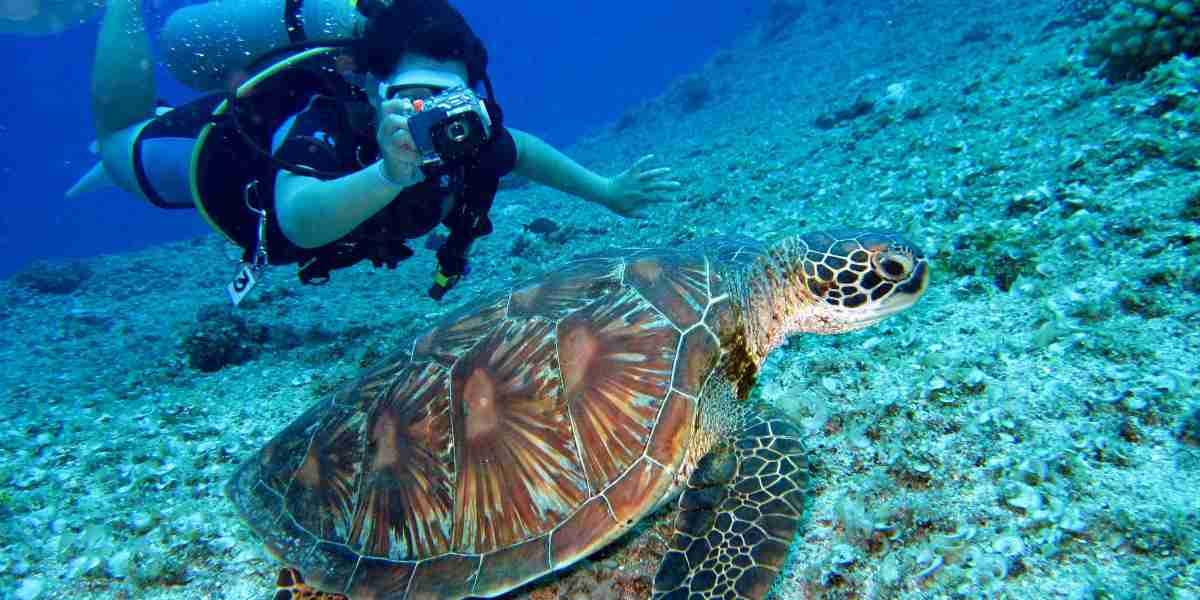The underwater world beckons with its mysterious allure, vibrant marine life, and breathtaking seascapes. For avid divers and ocean enthusiasts, exploring the depths offers a profound connection with nature that few other experiences can match. From the tropical waters of Southeast Asia to the remote corners of the Caribbean, the planet's most extraordinary diving destinations promise unforgettable encounters beneath the waves. Among these remarkable locations, diving in Sri Lanka has emerged as one of the hidden gems that deserves a prominent place on every diver's bucket list.
The Allure of Underwater Exploration
Scuba diving transcends mere recreation—it is a journey into another realm entirely. The weightlessness, the three-dimensional movement, and the intimate encounters with marine creatures create an almost meditative experience. Each dive site tells its own story through its unique topography, biodiversity, and historical significance.
The global diving community continues to grow as more people discover this life-changing activity. Advanced equipment technology has made diving more accessible than ever, while increasing awareness of marine conservation has fostered a deeper appreciation for these fragile ecosystems. Whether you are a seasoned diver or contemplating your first underwater adventure, the following destinations represent the pinnacle of what our oceans have to offer.
The Crystal Waters of the Maldives
The Maldives stands as the quintessential tropical paradise, with its overwater bungalows and impossibly blue waters. Below the surface, this Indian Ocean archipelago reveals equally impressive treasures. The nation's 26 atolls house vibrant coral gardens, vast pelagic species, and some of the world's most reliable manta ray cleaning stations.
Hanifaru Bay in Baa Atoll has gained fame for its extraordinary congregations of manta rays and whale sharks that gather to feed during monsoon season. Meanwhile, the channels between islands create thrilling drift dives where divers can witness the daily movement of marine life between the atoll's interior and the open ocean.
The house reefs surrounding the luxury resorts offer incredible accessibility—often just steps from your accommodation lies a world of colourful fish, curious turtles, and healthy coral formations. This combination of convenience and quality makes the Maldives an unmatched destination for both dedicated dive trips and mixed vacation itineraries.
Raja Ampat: The Crown Jewel of the Coral Triangle
Indonesia's Raja Ampat archipelago sits at the heart of the Coral Triangle, the global epicentre of marine biodiversity. This remote wilderness hosts more species of fish and coral than anywhere else on Earth—a fact immediately apparent from your first glimpse beneath the surface. Scientists have documented over 1,500 fish species and 750 coral species in these waters, with new discoveries continuing each year.
The region's relative isolation has preserved its pristine condition, with minimal human impact on its reefs. Divers regularly encounter massive schools of fish, from tiny anthias that move like synchronised dancers to imposing formations of barracuda that block out the sun. Reef sharks patrol the edges of drop-offs, while wobbegong sharks and epaulette sharks hide among the coral.
What truly distinguishes Raja Ampat is the kaleidoscopic variety of its dive sites. In a single day, you might explore limestone caves, swim through mangrove channels, and drift along vertical walls adorned with massive sea fans and soft corals in every conceivable colour.
The Galapagos Islands: Darwin's Underwater Laboratory
The Galapagos Islands need little introduction to nature enthusiasts. This volcanic archipelago, famous for inspiring Darwin's theory of evolution, extends its biological wonders well below the waterline. The convergence of cold and warm ocean currents creates a unique environment where tropical and temperate marine species coexist.
Diving in the Galapagos delivers encounters with some of the ocean's most charismatic megafauna. Hammerhead sharks gather in schools so dense they darken the water. Marine iguanas—the world's only seagoing lizards—graze on algae alongside grazing sea turtles. Playful sea lions treat divers as potential playmates, swirling around them with acrobatic grace.
Wolf and Darwin Islands, at the archipelago's remote northern edge, represent the holy grail for experienced divers. The challenging conditions offer rewards in the form of whale sharks, tiger sharks, and the possibility of observing orcas and sperm whales on their migratory routes. Few destinations can match the Galapagos for sheer concentration of large pelagic species.
Palau: The Underwater Wonderland of Micronesia
Palau combines pristine reefs with fascinating historical sites, creating a multidimensional diving experience. This Pacific nation pioneered marine conservation with the establishment of the world's first shark sanctuary, and the results of this protection are evident in the healthy shark populations that cruise the reefs.
The Blue Corner stands as Palau's signature dive site—a reef hook-equipped drift along a current-swept corner where sharks, tuna, barracuda, and countless reef fish congregate in staggering numbers. Nearby, the Blue Holes feature dramatic light beams that pierce through ceiling openings into cathedral-like underwater chambers.
Beyond the natural wonders, Palau's waters hold the remnants of World War II Pacific Theatre operations. Dozens of Japanese ships, planes, and military equipment rest on the seafloor, creating artificial reefs now colonized by corals and marine life. These underwater museums offer both historical perspective and extraordinary photo opportunities.
The Enchanting Underwater World of Sri Lanka
While often overlooked in favour of its more famous neighbours, the best scuba diving in Sri Lanka offers remarkable experiences for underwater enthusiasts. The teardrop-shaped island nation boasts diverse marine ecosystems ranging from shallow coral gardens to dramatic wrecks and deep-water pinnacles. The country's strategic position in the Indian Ocean creates nutrient-rich waters that attract an impressive variety of marine life.
The southwest coast, particularly around Hikkaduwa Marine National Park, showcases vibrant coral formations that have rebounded impressively since the 2004 tsunami. Here, divers regularly encounter hawksbill turtles, blacktip reef sharks, and the occasional whale shark during the right season. Sri Lanka diving tours frequently highlight the fascinating wreck of the SS Conch, a British cargo vessel sunk during World War II that now serves as an artificial reef teeming with life.
On the east coast, the protected bays around Trincomalee harbour exceptional visibility, particularly from May to October when the waters remain calm and clear. This region's underwater topography features stunning rock formations, extensive soft coral gardens, and encounters with massive Napoleon wrasse and hunting trevally. Many visitors combine their underwater adventures with cultural exploration, as snorkelling in Sri Lanka often takes place near ancient temples and historic sites.
The Red Sea: Where Desert Meets Ocean
Egypt's Red Sea coast presents a striking contrast—barren desert landscapes above water and explosions of life below. The region's isolation and strict protection measures have preserved spectacular coral formations that have disappeared from many other parts of the world.
The northern Red Sea features world-famous wrecks like the SS Thistlegorm, a British supply ship sunk in 1941 that still contains motorcycles, trucks, and military supplies frozen in time. The Brothers Islands, further south, attract shark enthusiasts with regular sightings of oceanic whitetips, hammerheads, and thresher sharks circling their steep walls.
What makes the Red Sea particularly appealing is its accessibility. Shore diving opportunities abound, and even novice divers can enjoy remarkable underwater scenery without venturing far from coastal resorts. The region's predictable conditions and excellent visibility year-round further enhance its appeal for divers of all experience levels.
The Great Barrier Reef: A Living Natural Wonder
Australia's Great Barrier Reef needs no introduction—this UNESCO World Heritage site represents the world's largest coral reef system, visible even from space. While the reef faces significant challenges from climate change and coral bleaching, vast areas remain vibrant and full of life.
The Ribbon Reefs north of Cairns offer some of the most pristine diving experiences, with sites like Cod Hole providing encounters with massive potato cod that approach divers with surprising boldness. The SS Yongala wreck near Townsville consistently ranks among the world's top wreck dives, hosting an astonishing concentration of marine life including bull rays, sea snakes, and enormous Queensland groupers.
The sheer scale of the Great Barrier Reef means that it contains an incredible diversity of dive environments. From shallow coral gardens perfect for beginners to challenging drift dives for experienced adventurers, the reef system offers appropriate experiences for every level of diver.
Conclusion: The Ocean's Endless Invitation
This collection of world-class diving destinations represents just a small sample of the underwater wonders our planet has to offer. Each location provides its own unique blend of marine life, underwater topography, and cultural context. Whether you are drawn to big animal encounters in the Galapagos, the biodiversity explosion of Raja Ampat, or the accessible treasures of diving in Sri Lanka, the ocean continues to call with its endless invitation to explore.
As we embrace these extraordinary experiences, we must also acknowledge our responsibility to protect these fragile environments. Sustainable diving practices, support for marine conservation initiatives, and spreading awareness about ocean health remain crucial components of the diving community's ethos. By diving with respect and advocating for protection, we help ensure these underwater paradises will continue to inspire wonder for generations to come.
The next time you find yourself planning an adventure, consider looking beneath the surface. In the silent realm below the waves, you will discover not just spectacular beauty but perhaps a deeper connection with our blue planet—an experience that continues to transform lives long after the bubbles have disappeared.






